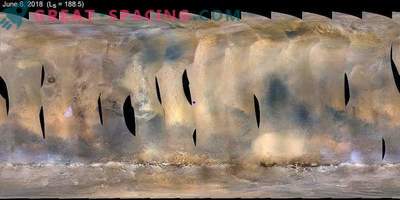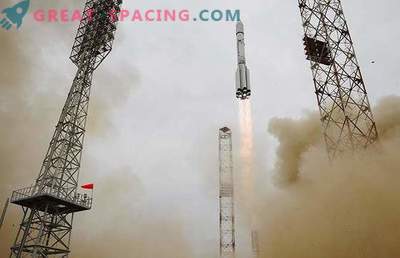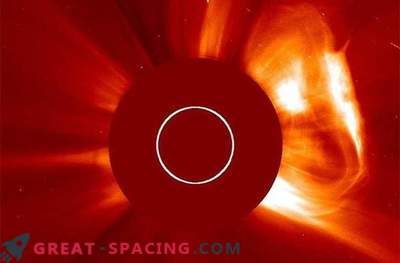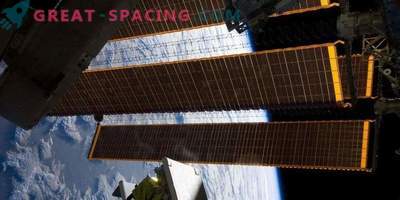
Astronauts in Martian missions will have to face exposure to at least 60% of the total exposure dose limit recommended for a career while visiting the Red Planet. Data derived from observations of ExoMars TGO. In addition, the team also presented new images of Mars with a description of a dust storm that covered the planet.
Monitoring of radiation
The TGO orbiter began scientific operations in April. Its main objectives are to provide the most detailed list of Martian atmospheric gases, including those that may be associated with active geological or biological processes. Radiation monitoring collected data from 2016.
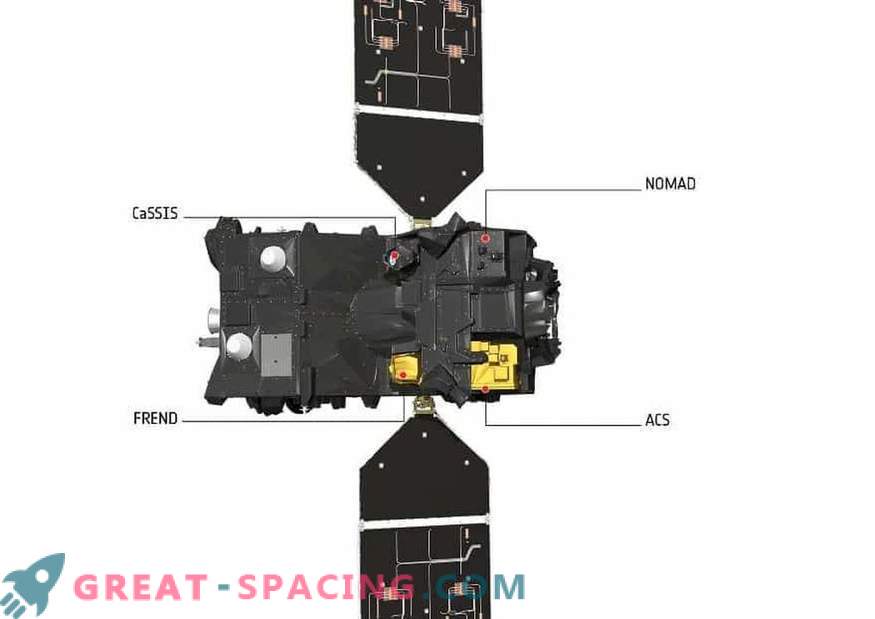
Artistic ExoMars vision with TGO and a set of tools
The FREND instrument provided data on radiation doses recorded during the 6-month interplanetary voyage of the orbiter to Mars. On Earth, a powerful magnetic field and dense atmosphere protect us from the constant attack of galactic cosmic rays - fragments of atoms outside the solar system, moving at about light speed and penetrating into biological material.
In space, such activity can cause serious damage to humans, including radiation sickness, increased risk of cancer, a blow to the central nervous system, and degenerative diseases. Therefore, ESA is studying ways to improve the protection of astronauts during long-distance space flights. ExoMars measurements cover a period of decreasing solar activity, which corresponds to a high radiation dose. The growth of stellar activity can deflect galactic cosmic rays, although large solar flares and eruptions also pose a danger to the lives of astronauts.
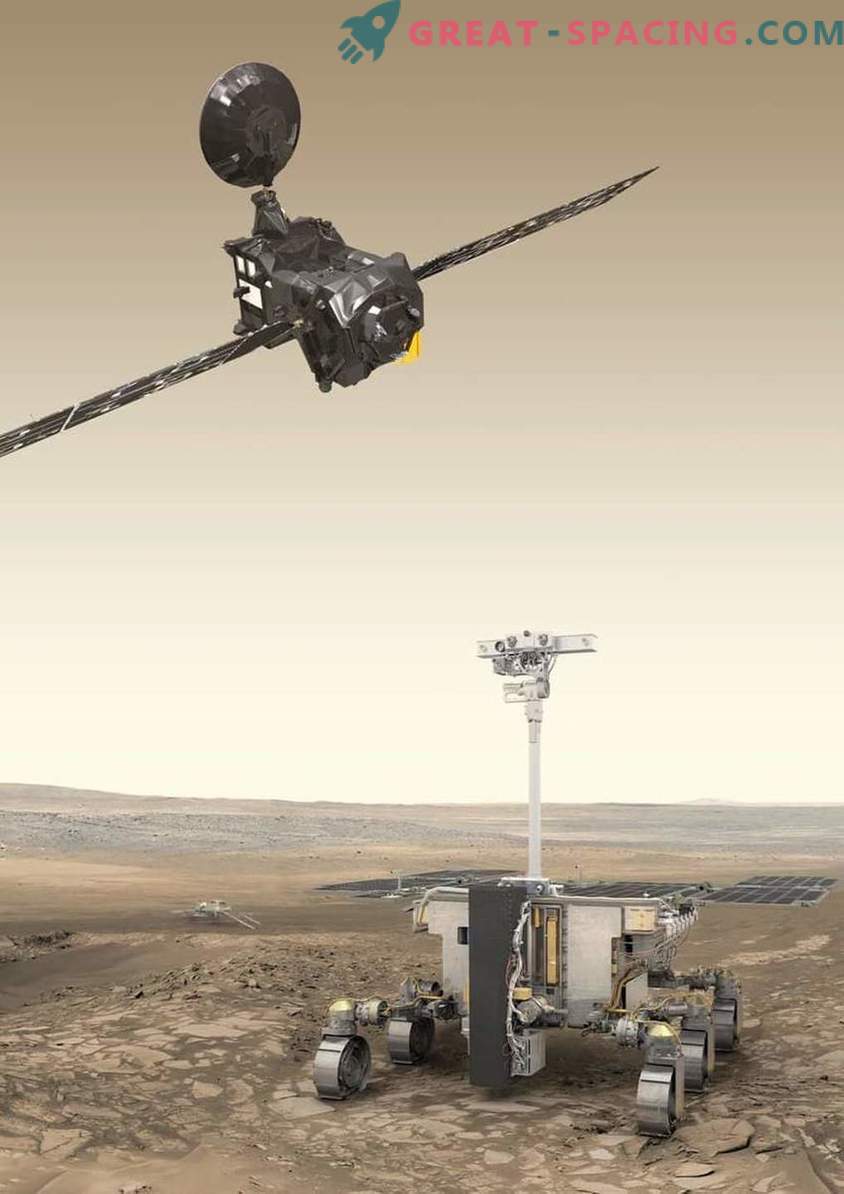
Artistic vision of the ExoMars 2020 rover (in front), ground research platforms (background) and the orbiter TGO (top)
Scientists cannot plan a multi-year human mission to Mars until they are aware of all the radiation risks. Accumulated radiation doses in the interplanetary space will be hundreds of times more than those received by people during the same period on Earth or in the ISS.
Calculations show that a 6-month journey to the Red Planet and returning back will expose the astronaut to at least 60% of the total exposure dose limit. The data from ExoMars will be used to test radiation models and radiation risk assessments for crew members of future intelligence missions.
A similar sensor is in preparation for the ExoMars 2020 mission for monitoring the radiation situation from the Martian surface. Arriving in 2021, the next mission will be a rover and a stationary platform for scientific research of the surface layer. TGO will function as a relay when transmitting data.
Global dust storm subsides.
Radiation is not the only danger that Martian missions face. The large-scale dust storm that engulfed the planet in early 2018 led to a significant reduction in the surface illumination level, dropping the NASA Opportunity rover into hibernation. The device is silent for more than 3 months. The TGO color camera and the CaSSIS surface stereo image system also suffered in orbit (400 km above the surface). The surface was almost completely covered with dust, so the cameras were turned off for this time.

Dust hides the Martian surface
Usually, researchers do not produce such images, but it turned out that such frames are well suited for calibration. The camera has a small space and a shot of a dust storm was used to find a source of scattered light and begin to output algorithms for its removal.
Since August 20, CaSSIS has again started round-the-clock visualization. One of the pictures from September 2 shows amazing dark stripes that can be associated with the storm. Perhaps they are formed by dust devils (whirlwinds). The ExoMars TGO team is pleased that its instruments and devices provide valuable information, although it is difficult to analyze the details of atmospheric gases in such conditions. Any little things about the Martian situation can help future colonists.



